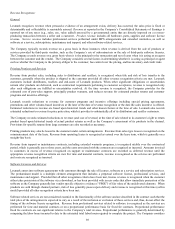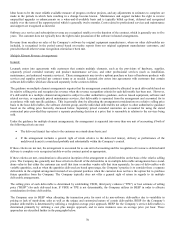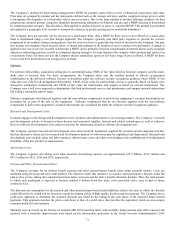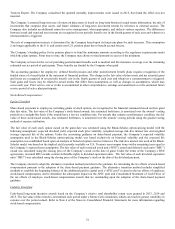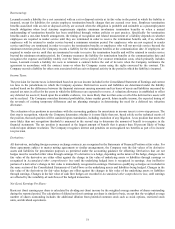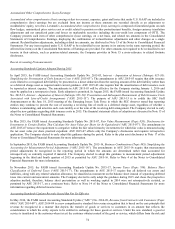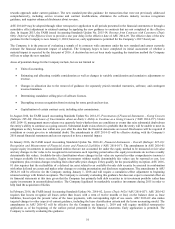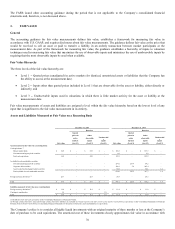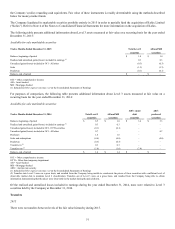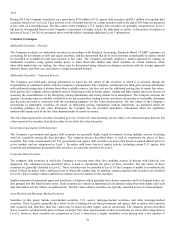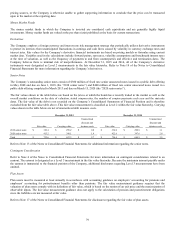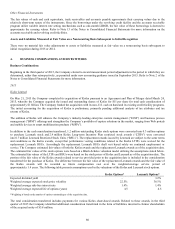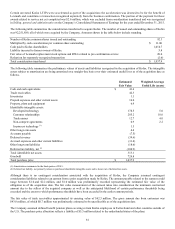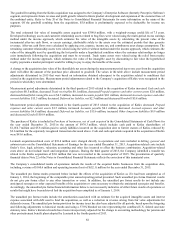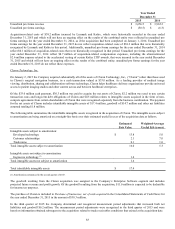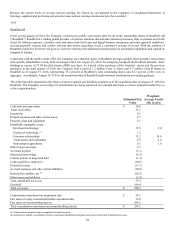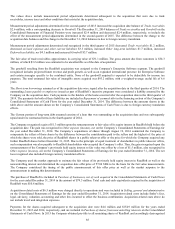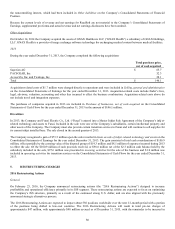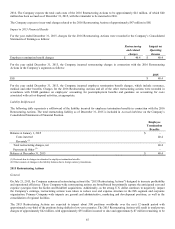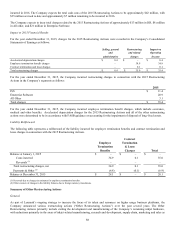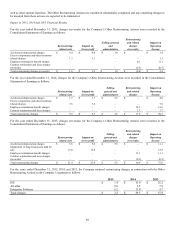Lexmark 2015 Annual Report Download - page 83
Download and view the complete annual report
Please find page 83 of the 2015 Lexmark annual report below. You can navigate through the pages in the report by either clicking on the pages listed below, or by using the keyword search tool below to find specific information within the annual report.
79
pricing sources, or the Company is otherwise unable to gather supporting information to conclude that the price can be transacted
upon in the market at the reporting date.
Money Market Funds
The money market funds in which the Company is invested are considered cash equivalents and are generally highly liquid
investments. Money market funds are valued at the per share (unit) published as the basis for current transactions.
Derivatives
The Company employs a foreign currency and interest rate risk management strategy that periodically utilizes derivative instruments
to protect its interests from unanticipated fluctuations in earnings and cash flows caused by volatility in currency exchange rates and
interest rates. Fair values for the Company’s derivative financial instruments are based on pricing models or formulas using current
market data. Variables used in the calculations include forward points, spot rates, volatility assumptions and benchmark interest rates
at the time of valuation, as well as the frequency of payments to and from counterparties and effective and termination dates. The
Company believes there is minimal risk of nonperformance. At December 31, 2015 and 2014, all of the Company’s derivative
instruments were designated as Level 2 measurements in the fair value hierarchy. Refer to Note 18 of the Notes to Consolidated
Financial Statements for more information regarding the Company’s derivatives.
Senior Notes
The Company’s outstanding senior notes consist of $300 million of fixed rate senior unsecured notes issued in a public debt offering
in May 2008 and due on June 1, 2018 (the “2018 senior notes”) and $400 million of fixed rate senior unsecured notes issued in a
public debt offering completed in March 2013 and due on March 15, 2020 (the “2020 senior notes”).
The fair values shown in the table below are based on the prices at which the bonds have recently traded in the market as well as the
overall market conditions on the date of valuation, stated coupon rates, the number of coupon payments each year and the maturity
dates. The fair value of the debt is not recorded on the Company’s Consolidated Statements of Financial Position and is therefore
excluded from the fair value table above. This fair value measurement is classified as Level 2 within the fair value hierarchy. Carrying
values shown in the table below are net of unamortized debt issuance costs.
December 31, 2015
December 31, 2014
Unamortized
Unamortized
discount and
discount and
Fair value
Carrying value
issuance costs
Fair value
Carrying value
issuance costs
2018 senior notes
$
322.4
$
299.2
$
0.8
$
334.0
$
298.9
$
1.1
2020 senior notes
413.2
398.1
1.9
422.6
397.6
2.4
Total
$
735.6
$
697.3
$
2.7
$
756.6
$
696.5
$
3.5
Refer to Note 13 of the Notes to Consolidated Financial Statements for additional information regarding the senior notes.
Contingent Consideration
Refer to Note 4 of the Notes to Consolidated Financial Statements for more information on contingent consideration related to an
earnout. The earnout is designated as a Level 3 measurement in the fair value hierarchy. Because the maximum amount payable under
the earnout is immaterial to the financial position of the Company, additional disclosures regarding Level 3 measurements have been
omitted.
Plan Assets
Plan assets must be measured at least annually in accordance with accounting guidance on employers’ accounting for pensions and
employers’ accounting for postretirement benefits other than pensions. The fair value measurement guidance requires that the
valuation of plan assets comply with its definition of fair value, which is based on the notion of an exit price and the maximization of
observable inputs. The fair value measurement guidance does not apply to the calculation of pension and postretirement obligations
since the liabilities are not measured at fair value.
Refer to Note 17 of the Notes to Consolidated Financial Statements for disclosures regarding the fair value of plan assets.


